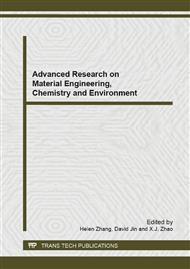p.480
p.486
p.493
p.498
p.502
p.508
p.511
p.516
p.521
A New Method for Predicting Compressive Strength of Cement-Based Materials
Abstract:
As a porous medium, the strength of cement-based materials is significantly affected by its porosity. This paper presents a new method to describe the strength development of cement-based materials as a function of porosity based on a developed microstructure hydration model of cement. The hydration model deduces the relationship between the diameter change of cement particle and time based on Krstulović-Dabić hydration kinetics formulas and extends a broader version by considering the effect of water reduction, temperature variation, interfacial contact area between hydration products and free water on the hydration rate. Using the hydration model, the time-varying development of porosity can be obtained. Then, based on the strength model proposed by Maekawa et al, in which both the present and initial porosity are taken into account, a new method was established to predict the strength evolution with the porosity calculated by the hydration model.
Info:
Periodical:
Pages:
502-507
Citation:
Online since:
September 2013
Authors:
Keywords:
Price:
Сopyright:
© 2013 Trans Tech Publications Ltd. All Rights Reserved
Share:
Citation:


